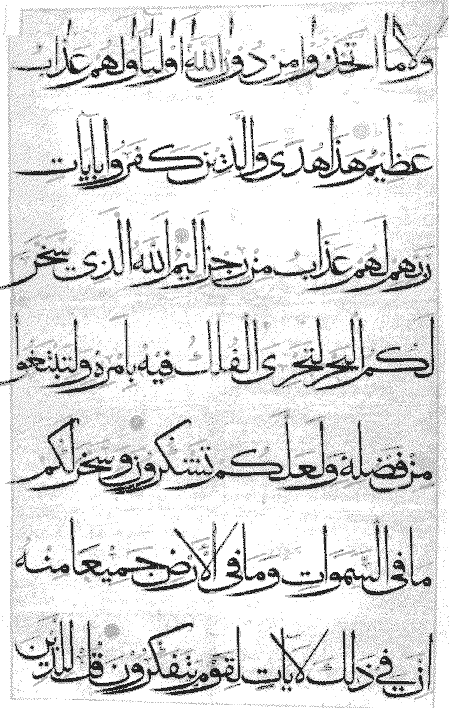Islamic
Calligraphy
Sheila S. Blair
(Edinburgh University Press)
Calligraphy
Sheila S. Blair
(Edinburgh University Press)

The poet Ezra Pound, the musician John Cage, and Marshall McLuhan and his followers made much of Chinese calligraphy --- averring that the written language was representational, an artist's vision of sound. Strange that they should not have accorded the same respect and interest to Islamic characters.
In this fine volume of almost 700 pages, Sheila S. Blair shows an impressive knowledge of the principles and origination of Arabic Script, Early Manuscripts of the Koran, the coming of what is termed "round script," the history and changes of various styles, and finally, a section entitled "The Many Faces of Islamic Calligraphy in Modern Times."
Almost two hundred photos and drawings are included. What catches the eye immediately is the representational balance of many of these ancient manuscripts. An example is a folio dated 876 (Ramadan 262) of the reign of Amajur, governor of Damascus. Professor Blair points out the spaciousness of the characters, "twenty-five letters per page." For a casual observer, it is a leisurely sequence of unknown and artful characters that might well represent armies and boats under sail.
A second "elephantine manuscript," she informs us, may come from the reign of imur (1370 - 1405), possibly from the mosque at Samarkand. The Codex amounted to 1600 pages and would have needed "two-thirds of an acre of paper."
One cannot ignore the good professor's thorough-going knowledge in her field. One chapter alone, "Ottomans in Anatolia, Balkans, Eastern Mediterranean" sports 155 footnotes.
